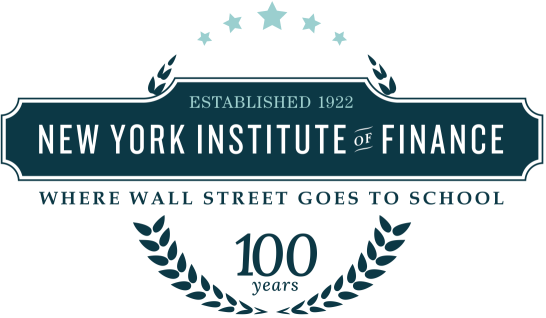Quantitative Methods for Finance Professional Certificate
This hands-on certificate program develops the fundamental desk-ready skills essential for quantitative roles in finance, including trading, structuring, valuation, risk management, regulation and financial engineering. Learn all the mathematical techniques, Excel tools, VBA programming skills and numerical methods that you need to succeed.
This Professional Certificate comprises the following courses:
- Mathematics, Probability and Statistics for Finance (Days 1 - 3)
- Introduction to Programming for Finance (Day 4)
- Numerical Methods for Finance (Day 5)
Prerequisite knowledge:
- Intermediate MS Excel skills
- Basic calculus
- Basic probability
Module 1: Mathematical Basics
- Sequences, series and limits
- Application: Annuities, Perpetuities and Coupon Bonds
- Application: Macaulay duration and convexity
- Euler's number
- Application: Continuous compounding
- Exponential and logarithmic functions
Module 2: Derivatives and Differentials
- Tangents, limits and derivatives
- Partial derivatives
- Taylor series expansion of a function
- Application: Modified duration and convexity
- Optimization
- Application: Optimal stopping I
Module 3: Integration
- Definite and indefinite integrals
- Application: Optimal stopping II
- Integration by parts
- Application: Modified duration and convexity for bonds making continuous payments
- Easy differential equations
Module 4: Essential Linear Algebra for Finance
- Systems of linear equations
- Matrix multiplication
- Determinants
- Matrix inversion
- Application: Interpolating yield curves
- Cramer's rule
- Cholesky decomposition
Module 1: Probability
- Probability and random variables
- Distribution and density functions
- Moments of random variables
- Jensen's inequality
- Application: Risk aversion and risk management
- Probability models for finance
- Application: A binomial option pricing formula
- Application: A model for credit risk
- Multivariate probability models
- Covariance, correlation and dependence
- Application: Portfolio mathematics
- Copula functions
- Application: Basket default swaps
Module 2: Stochastic Processes
- Discrete time processes
- Random walks
- Markov and martingale properties
- Application: Pricing options on a binomial lattice
- Continuous time processes
- Brownian motion and Ito processes
- Application: The Black-Scholes-Merton European option pricing formula
Module 1: Essential Statistics for Finance
- Point estimation of population parameters
- Method of moments and maximum likelihood
- Desirable properties of estimators
- Interval estimation
- Application: Value at Risk
- Hypothesis testing
- Type I vs. type II errors
Module 2: Regression Analysis
- Method of least squares
- Linear vs. non-linear models
- Properties of linear model estimators
- Confidence intervals and hypothesis tests for model parameters
- Problems: Heteroscedasticity, autocorrelation and multicollinearity
- Application: The market model
Module 1: Introduction to VBA Programming
- The VBA IDE
- Writing a simple function
- Variables, data types and constants
- Subroutines and functions
- Built-in functions and statements
- Program control statements
- Application: A Black-Scholes-Merton option pricer
Module 2: Arrays in VBA
- Declaring arrays
- Dynamic arrays
- Resizing an array
- Arrays as inputs
- Arrays as outputs
- Application: A Cholesky decomposition function
Module 3: (Slightly) More Advanced VBA Topics
- Benefits of explicit variable declaration
- Variable scope: Public, Private and Local
- Error handling
- Debugging code
- Reading files
- The Excel object model
Module 1: Monte Carlo Methods
- Random number generation
- Application: Simulating Brownian motion
- Application: Pricing European options by simulation
- Simulating correlated random numbers
- Application: Simulating correlated default times
- Techniques for accelerating convergence
Module 2: Lattice Techniques
- Fitting a binomial tree to an asset price process
- Application: Pricing an American put on a binomial tree
- Application: Pricing options on dividend paying securities
- Trinomial tree models
Module 3: Finite Difference Techniques
- Approximating first and second derivatives by finite differences
- Explicit finite difference technique for derivatives pricing
- Application: Pricing options
- Overview of more robust approaches: Implicit and Crank-Nicolson
Module 4: Desk Ready Skills Knowledge Check
